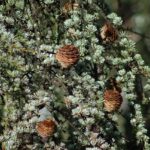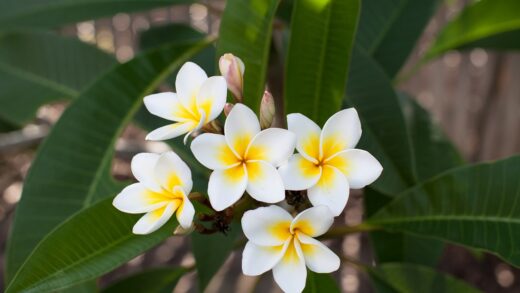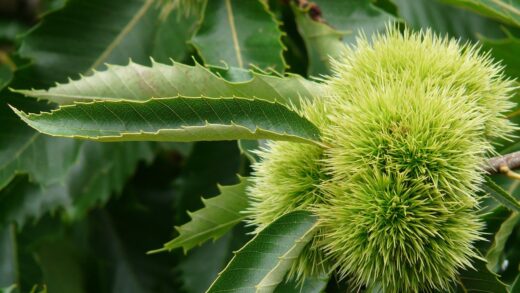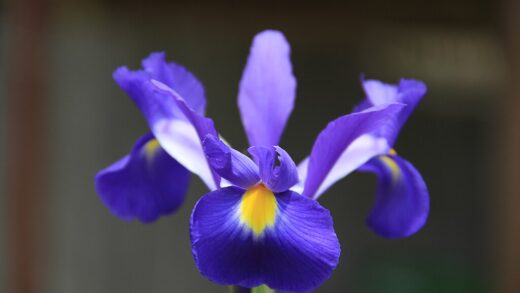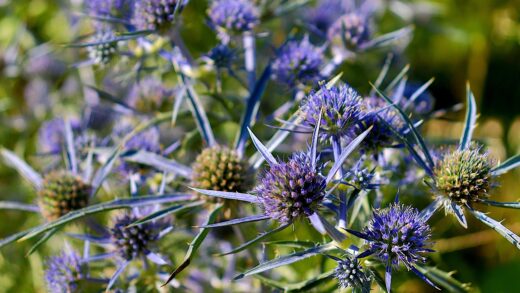Proper pruning and cutting back are essential horticultural practices that significantly enhance the beauty, health, and longevity of the peach-leaved bellflower. These simple yet timely interventions can transform a good floral display into a truly spectacular one, while also maintaining the plant’s vigour for years to come. The primary goals of pruning this particular perennial are to extend its blooming period, to encourage a potential second flush of flowers, to maintain a tidy and attractive appearance, and to prevent unwanted self-seeding. Understanding when and how to perform these tasks is key to maximizing the plant’s performance in the garden border.
The most important pruning task during the growing season is deadheading, which is the removal of spent flowers. For the peach-leaved bellflower, this is a continuous process throughout its flowering period in early to mid-summer. By diligently removing the faded blossoms, you prevent the plant from directing its energy into producing seeds. Instead, this energy is redirected into the development of new flower buds further down the stem, thereby prolonging the overall flowering season and keeping the plant looking fresh and vibrant. This simple act of grooming is one of the most effective ways to get more floral value from your plant.
Once the main flush of flowering has concluded, a more significant cutting back of the flower stems is often beneficial. This not only tidies up the plant’s appearance but can also stimulate the basal rosette of foliage to produce a smaller, secondary flush of blooms later in the summer or early autumn. This “summer pruning” helps to rejuvenate the plant after its major reproductive effort and keeps the garden looking neat during the transition from mid to late summer. The method and extent of this cutback can be varied depending on the desired outcome and the overall health of the plant.
Finally, an end-of-season cutback in late autumn prepares the plant for its winter dormancy. This tidying process involves removing the old, dead flower stems and any damaged foliage, which helps to improve air circulation around the crown and reduces the chances of pests and diseases overwintering in the garden debris. Each of these pruning stages—deadheading, summer cutting back, and autumn cleanup—plays a distinct role in the annual care cycle of the peach-leaved bellflower, contributing to a healthier, more floriferous, and better-structured plant.
The practice of deadheading for prolonged bloom
Deadheading is arguably the most crucial pruning activity for the peach-leaved bellflower during its active growing season. The primary purpose of this task is to interrupt the plant’s natural life cycle. Once a flower has been pollinated, the plant’s hormonal signals shift its energy focus from producing more flowers to developing seeds within the spent bloom. By removing the faded flower before it has a chance to set seed, you effectively trick the plant into continuing its flowering phase in a renewed attempt to reproduce. This results in a significantly longer and more continuous blooming period.
More articles on this topic
The flower spikes of Campanula persicifolia produce numerous individual bell-shaped flowers that typically open sequentially from the bottom of the stalk to the top. This means that deadheading needs to be an ongoing process rather than a single event. As the lower flowers on a stem begin to fade and wither, they should be individually pinched or snipped off. This can be a somewhat tedious task, but the reward is substantial. By removing the spent lower blooms, you not only improve the appearance of the flower stalk but also encourage the upper buds to continue developing and opening.
It is important to be precise when removing the individual flowers. You want to snip off the faded bloom along with its small stem, cutting back to the main flower stalk. Care should be taken not to damage any adjacent, unopened flower buds that are still to come. Using a small, sharp pair of scissors or floral snips can make this task easier and more accurate than pinching with your fingers, which can sometimes tear the plant tissue.
If you wish for your bellflowers to self-seed and naturalize in a more informal garden setting, you can choose to leave a few of the last flower stalks on the plant to mature and set seed. However, for the tidiest appearance and the longest possible flowering display in a formal border, diligent and regular deadheading is the recommended practice. This regular attention throughout the early summer will keep your plants looking their best and will maximize the floral output.
Cutting back after the first flush of flowers
After the main flowering spectacle of the peach-leaved bellflower has concluded, typically by mid-summer, the tall flower stalks can begin to look tired and untidy. This is the ideal time for a more substantial cutting back to rejuvenate the plant and neaten its appearance. The goal of this summer prune is to remove the old, unproductive flower stems, which encourages the plant to put its energy back into its basal foliage and roots, and can often stimulate a secondary, smaller wave of blooms later in the season.
More articles on this topic
There are a couple of approaches to this task. For the most thorough rejuvenation, you can cut the entire faded flower stalk right back to the basal rosette of leaves at the base of the plant. Using a clean, sharp pair of secateurs, make a clean cut a few inches above the ground. This removes all the spent flowering parts and leaves a neat and tidy clump of low-growing foliage. This method is particularly effective for encouraging the plant to produce new growth from the base, which may include new, albeit shorter, flower stems.
An alternative, less severe method is to cut the flower stem back by about a third or a half, making your cut just above a leaf node or a side shoot that may have already started to form further down the stem. This can sometimes encourage quicker reblooming from these lateral shoots, although the resulting flowers will be on shorter stems. The best method to choose often depends on the specific variety of bellflower and the overall tidiness you wish to achieve in your garden.
This post-flowering cutback not only has aesthetic and reblooming benefits but also helps to improve the overall health of the plant. By removing the old stems, you increase air circulation through the centre of the plant and around the basal foliage. This is particularly important during the humid months of late summer, as it helps to reduce the risk of fungal diseases like powdery mildew from taking hold. This simple act of tidying up sets the stage for a healthy second half of the growing season.
Pruning to prevent self-seeding
The peach-leaved bellflower can be a prolific self-seeder in optimal growing conditions. While this can be a desirable trait in a wildflower meadow or a relaxed cottage garden where a naturalized effect is sought, it can be a nuisance in a more formally designed border. Unwanted seedlings can quickly pop up in inconvenient places, creating competition for established plants and requiring a lot of effort to weed out. Pruning, specifically the timely removal of flower stalks, is the most effective way to control this self-seeding tendency.
The key to preventing self-seeding is to remove the flower stalks before the seed pods have had a chance to ripen and disperse their contents. This means that the cutting back described in the previous chapter must be done promptly after the flowering period ends. If you delay this task and allow the faded flowers to develop into mature seed pods, you will have missed the window of opportunity for control. The seed pods are mature when they become dry and brown and begin to open small pores through which the fine, dust-like seeds are released.
For complete control, it is essential to be thorough. Ensure that all flower stems are cut back to the basal foliage. Even a single missed stem can produce hundreds of seeds, leading to a new crop of seedlings the following spring. This diligent removal of the flowering stems is a far easier and less time-consuming task than having to identify and remove dozens of unwanted bellflower seedlings from amongst your other perennials the next year.
It is worth noting that this is a matter of personal gardening preference. Some gardeners enjoy the serendipity of self-sown plants and the full, natural look they can create. If this is your goal, then you should deliberately leave some of the healthiest flower stems on the plant to allow them to set seed. You can then either let the seeds fall where they may or collect them once they are ripe to sow in other parts of the garden where you would like more plants. Pruning gives you the power to control the plant’s reproductive cycle according to your specific design intentions.
Autumn cleanup and preparation for winter
The final pruning task of the year for the peach-leaved bellflower takes place in late autumn, after the first hard frosts have signalled the end of the growing season. This autumn cleanup is primarily a matter of garden hygiene and preparing the plant for its winter dormancy. The frost will cause the remaining foliage and any late-season stems to die back. Removing this dead material is important for preventing diseases and pests from overwintering in the debris.
Using clean secateurs, cut back all the dead and dying stems and leaves to the ground. The peach-leaved bellflower forms a basal rosette of leaves that is often semi-evergreen, meaning it can retain some green foliage throughout the winter, especially in milder climates. When cutting back, be careful not to damage this basal rosette, as it will continue to photosynthesize on milder winter days and stores the energy the plant needs to survive until spring. The cleanup should focus on removing the tall, dead stems and any yellowed or diseased foliage from around the crown.
This final cutback improves air circulation around the crown of the plant, which is crucial for preventing rot during the cold, wet months of winter. A dense mat of decaying foliage can trap moisture against the crown, creating the perfect conditions for fungal diseases to take hold and potentially kill the plant. A clean and open crown allows air to circulate freely, keeping the area drier and much healthier.
Once you have cut back the plant, dispose of the removed debris properly, especially if you have noticed any signs of disease like powdery mildew or rust during the growing season. Do not add diseased plant material to your home compost pile, as the spores may not be killed and could be spread around the garden later. This final act of pruning and sanitation is the last step in the annual care cycle, leaving your plant tidy and healthy as it enters its winter rest, ready to burst forth with new growth in the spring.








